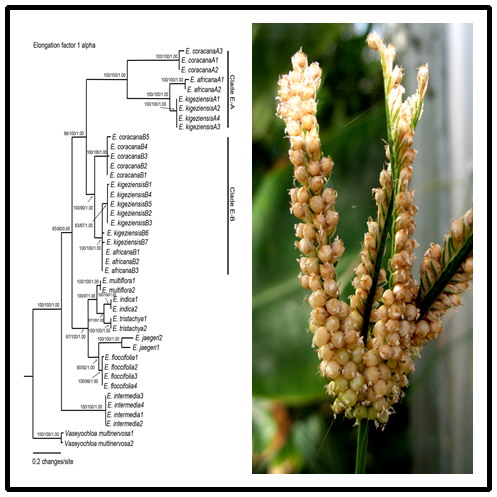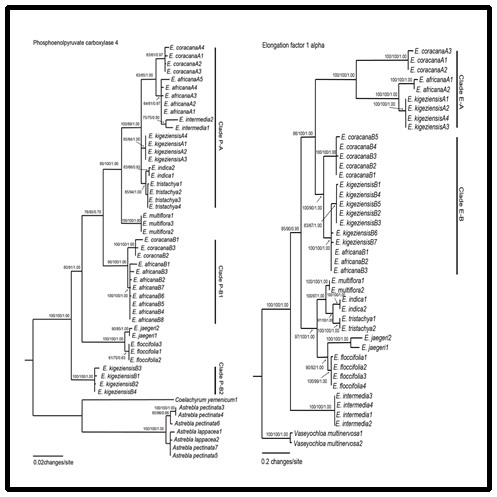Allotetraploid Origin and Divergence in Eleusine
Hybridization followed by allopolyploidization is a principal speciation mode for Eleusine (Poaceae) in East Africa and Americas. Recently, Dr. LIU Qing of South China Botanical Garden and her cooperators of Smithsonian Institution employed two LCN markers and plastid markers to support independent allotetraploid origins for E. kigeziensis and the E. africana-E. coracana clade, both events may have involved diploids E. indica and E. tristachya as the maternal parents, but paternal parents remain unidentified. The habitat-specific hypothesis is proposed to explain the divergence of Eleusine and its allotetraploid lineages.
The study was supported by the China Scholarship Council Awards (no. 2008491004) and the Key Laboratory of Plant Resources Conservation and Sustainable Utilization of Chinese Academy of Sciences (no. 200922). The paper has been published in the recent issue of Annals of Botany (2011, 108: 1287–1298).

Fig.1 Bayesian divergence time estimates of Eleusine (shaded) based on the six combined plastid gene markers of Chloridoideae. Fig.2 Mature inflorescence of Eleusine coracana.

Fig.1 Maximum likelihood phylogeny of Eleusine inferred from the nuclear Pepc4 data.
Fig.2 Maximum likelihood phylogeny of Eleusine inferred from the nuclear EF-1a data.
File Download: